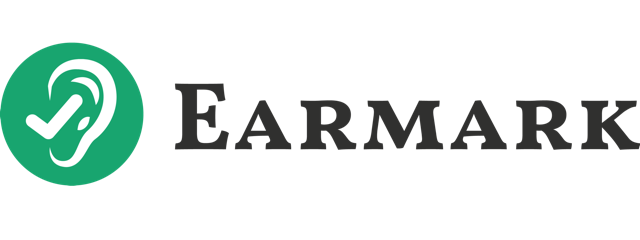Millions of small business owners start every morning the same way—logging into their bank account to see their balance. While 95% of business owners perform this daily check, a recent Cash Flow Compass report from Relay reveals a startling insight: 91% of small businesses face ongoing cash flow challenges. Despite their vigilance, most owners still lack the structures and systems to plan effectively, leaving them vulnerable to late payments, insufficient reserves, and high stress.
Based on a recent webinar featuring Blake Oliver, CPA, and Relay’s own Deanna Zubrickas, this article explores how accountants and financial advisors can move beyond balance-check advising and guide clients toward proactive, data-driven cash flow strategies. By leveraging multiple bank accounts, automated transfers, and regular check-ins, accountants can deliver both financial clarity and much-needed peace of mind to overworked owners.
Let’s dive into some of the key points from the webinar and, more importantly, what you can learn from them.
1. The Universal Challenge: 91% Face Cash Flow Struggles
In Relay’s Cash Flow Compass survey of over 750 small businesses:
- 91% of respondents reported dealing with cash flow issues.
- Common causes include rising labor costs, seasonal fluctuations, and late client payments.
With so many business owners feeling the pinch, accountants have an opportunity to provide high-value advisory services that go far beyond routine compliance work.
2. Overconfidence vs. Reality: The 42% Confidence Gap
One surprising finding is that many owners believe they have a solid handle on their finances—but the numbers tell a different story. On average, business owners are 42% more confident in their cash flow management than is justified by their actual data. This gap creates real risks.
Blake remarks, “Coming off of a busy season, business owners see a big bank balance and feel invincible. The challenge is helping them realize that money might need to stretch through slower months or seasonal dips.”
This mismatch between perception and reality underscores the need for deliberate systems that track not just daily balances but future obligations.
3. Missing Payments, Personal Stress, and Burnout
Cash flow struggles affect both the business and its people:
- 31% of respondents missed or were late on major payments, including rent and payroll.
- 71% reported experiencing significant stress or anxiety due to cash flow woes.
- 62% said they suffered negative outcomes like delayed projects or losing clients.
For many, delayed payments jeopardize vital relationships with landlords, suppliers, and staff. Even worse, it erodes personal well-being. As Blake noted in the webinar, accountants are uniquely positioned to help clients break this cycle, offering regular check-ins and proactive planning that reduce the risk of crisis—and the accompanying burnout.
4. The Single-Account Trap: Why 24% Use Multiple Accounts
Despite recognizing their vulnerabilities, most small businesses still rely on one operating account for everything. According to the survey:
- 95% check their balance daily,
- but only 24% maintain multiple accounts to track and separate funds.
Without additional accounts, it’s easy to mix up funds earmarked for payroll, taxes, or profit distributions. That single lump-sum balance can create a false sense of security. This is where modern tools and advisory play a crucial role.
5. Structuring for Success: Multiple Accounts and Automated Transfers
Relay, the official banking partner of Profit First, offers a clear solution:
- Create Multiple Accounts: At a minimum, split finances into an operating account, payroll account, and savings or tax account.
- Automate Transfers: Relay lets you set rules so each payment received is split into designated buckets—e.g., 10% for taxes, 15% for profit, and the rest for operations.
- Project-Based Accounts: For agencies or firms handling multiple projects, separate accounts for each project can clarify available budgets without waiting for monthly reconciliations.
- Receipt Capture & Sync: Relay’s new receipt capture feature (in beta) automatically syncs to QuickBooks or Xero, streamlining bookkeeping and reducing administrative overhead.
By making these processes nearly automatic, business owners start building reserves without having to remember monthly or quarterly transfers. Even small percentage allocations can add up, bolstering that emergency fund. Meanwhile, accountants can monitor activity in real-time rather than sifting through backlogged statements.
6. Advisory in Action: Weekly 15-Minute Check-Ins
A critical element of success is consistent communication. Rather than waiting for quarterly reviews—or worse, an emergency—weekly 15-minute video calls can transform client relationships:
- Forecast: Quickly update spreadsheets or dashboards, listing upcoming bills, expected deposits, and payroll cycles.
- Allocate: Ensure auto-transfers are working as intended and address any shortfalls immediately.
- Plan: Discuss hiring decisions or new projects that might affect cash flow in coming weeks.
This shift from reactive to proactive engagement positions accountants as strategic partners. As clients see their cash flow stabilize, trust builds, and deeper advisory conversations become routine.
7. The Bigger Picture: Reducing Stress and Enabling Growth
When small businesses move beyond bank-balance management, they gain more than just better books—they reduce anxiety, avoid late fees, and seize growth opportunities. With 43% of surveyed businesses having less than a month of reserves, even moderate savings can soften sudden revenue dips or unexpected expenses.
Most importantly, owners get back to focusing on what they do best—running and growing their companies—rather than obsessing over daily balances. It’s a win-win for both the client and the accountant.
Conclusion: Empower Your Clients to Thrive
For many entrepreneurs, the line between personal and business stress is razor-thin. By advocating structured cash flow management—multiple accounts, automated transfers, and regular advisory sessions—accountants can deliver peace of mind while ensuring clients have the resources to grow sustainably.
Ready to see these strategies in action? Watch the full webinar for in-depth conversations, real-world examples, and detailed demonstrations on how to implement a modern cash flow system. Equip your clients to move beyond the daily balance check and lay the groundwork for lasting success.
